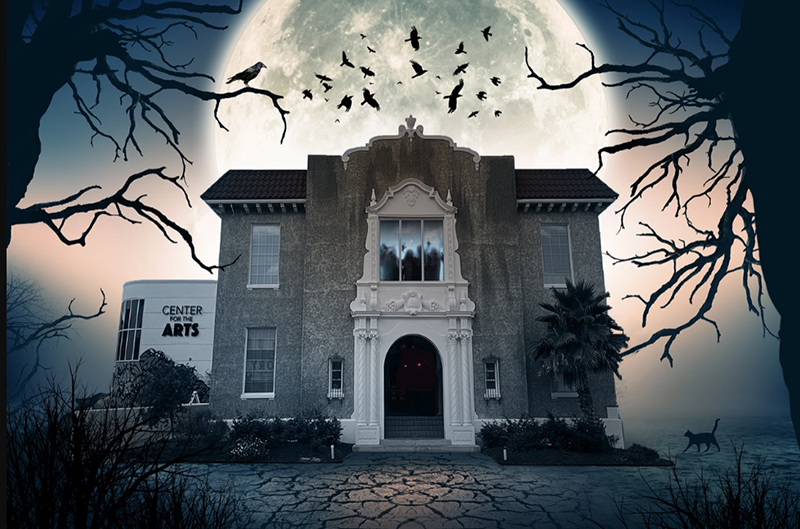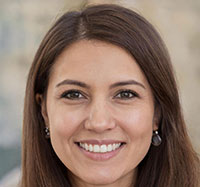Have you ever woken up in a cold sweat after dreaming of a haunted house? Or perhaps you’ve found yourself trapped in the eerie corridors of your dream home, or even contemplating buying a haunted property? Dreams have long fascinated and perplexed us, and the symbolism behind dreaming of a haunted house is no exception. In this article with Impeccable Nest, we will delve into the depths of the subconscious mind to unravel the meaning of dream of a haunted house. So, buckle up and get ready for an exploration into the realm of dreams!

What does Dreaming of a Haunted House Mean?
Dreaming of a haunted house can hold significant meaning and may provide insight into your subconscious fears and anxieties. The haunted house, in this context, represents a symbolic representation of unresolved trauma or emotional distress that remains hidden within your psyche.
When you dream of a haunted house, it serves as a metaphorical manifestation of the lingering troubles that exist within you. It suggests that there are unresolved issues from your past that continue to haunt you, inhibiting personal growth and happiness. These issues might be traumatic experiences, painful memories, or deep-seated emotional wounds that you have not yet fully dealt with or processed.
The presence of a haunted house in your dream signifies that these unresolved fears and anxieties are still affecting your life on some level. They could be impacting your relationships, self-esteem, or overall well-being. Your subconscious is signaling the need to confront these haunting aspects of your past and work towards healing and resolution.
By confronting the haunted house in your dream, you are being encouraged to face your fears head-on. This dream serves as a reminder that avoiding or suppressing these emotions will only prolong their influence over your life. It is essential to acknowledge and explore these hidden traumas or emotional issues, allowing yourself the opportunity to heal and move forward.
Dreaming of a haunted house may also indicate a need for introspection and self-reflection. It suggests that you should delve deep into your own psyche to uncover the root causes of your fears and anxieties. By understanding the underlying triggers and patterns, you can gain clarity and develop strategies to overcome them.
Furthermore, this dream could be a call to seek external support or guidance. Sometimes, dealing with past traumas or unresolved emotional issues requires professional help, such as therapy or counseling. Consulting with a trained therapist can provide you with the necessary tools and techniques to navigate through these challenges and find a path towards healing.
Dreaming of Buying a Haunted House: Risky Endeavors or Hidden Opportunities?
Dreaming of a haunted house often carries symbolic meaning rather than literal implications. When you find yourself dreaming about buying a haunted house, it is essential to understand that the dream is not necessarily an ominous sign or a prediction of future events. Instead, it can be interpreted as a reflection of your subconscious mind and the emotions and thoughts you are currently experiencing.
In this context, the dream of buying a haunted house suggests that you may be contemplating taking on a risky endeavor or venturing into unexplored territories in your waking life. Just like a haunted house, these new opportunities or challenges might initially appear frightening or intimidating. However, the dream also implies that beneath the surface, there lies potential for personal growth, transformation, and exciting discoveries.
By presenting you with the image of a haunted house, your dream is urging you to evaluate both the potential risks and rewards associated with the path you are considering. It encourages you to thoroughly examine the situation and make an informed decision before fully committing yourself. This dream serves as a reminder to weigh the pros and cons, assess your capabilities, and determine whether the potential benefits outweigh any potential drawbacks.
Remember, dreams are complex and highly subjective, so your personal associations and experiences will influence their interpretations. It is crucial to consider your individual circumstances and emotions when analyzing the meaning of a dream. If you consistently have dreams about haunted houses or feel particularly intrigued or disturbed by them, it may be beneficial to explore these feelings further through journaling, therapy, or self-reflection.
Dreaming of Moving into a Haunted House: Embracing Change and Transformation
Dreaming of a haunted house can hold deep symbolic meaning. Such dreams often represent significant transitions or changes that you may be experiencing in your life. Moving into a haunted house within the dream realm suggests that you are embarking on a new chapter filled with uncertainty and challenges. This transition may seem daunting at first, as moving into a haunted house implies a certain level of fear and unease.
However, it’s important to recognize that this dream is not necessarily negative. In fact, it can be seen as an opportunity for personal transformation and growth. Just as a haunted house is filled with mystery and hidden secrets, your own life transition holds the potential for self-discovery and exploration.
By dreaming of moving into a haunted house, your subconscious may be urging you to embrace the unknown and confront the fears or anxieties associated with change. It encourages you to have faith in your ability to adapt and navigate through the challenges that lie ahead.
Remember, stepping out of your comfort zone and taking on new experiences can lead to personal development and growth. This dream serves as a reminder that even though change may be unsettling, it presents an opportunity for positive transformation and self-improvement.
So, if you find yourself dreaming of a haunted house, try to view it as a symbol of the exciting journey you are embarking upon. Embrace the challenges that come with change, trust in your own abilities, and remain open to the possibilities that await you. By doing so, you can navigate this transitional phase with grace and emerge stronger on the other side.
Dreaming of Being Trapped in a Haunted House: Breaking Free from Limitations
Dreaming of a haunted house carries symbolic meaning and can evoke distressing emotions. This dream scenario typically signifies a feeling of being trapped in your waking life, where you experience a sense of confinement due to various limitations or circumstances beyond your control. The haunted house serves as a metaphor for these constraints that are holding you back.
The eerie atmosphere and paranormal activities within the haunted house reflect the unsettling nature of the challenges you face in reality. It may signify unresolved issues, past traumas, or negative experiences that continue to haunt you. Just as ghosts and spirits lurk within the walls of the house, these unresolved aspects of your life linger in your subconscious mind, creating a constant state of unease.
Being held captive within the haunted house in your dream is a representation of how these limitations and circumstances have restricted your personal growth and freedom. It symbolizes a feeling of powerlessness and an inability to escape from the shackles of your current situation.
However, this dream is not meant to instill fear but rather to serve as a wake-up call. It urges you to confront and address these challenges head-on. Just as dreams provide valuable insights into our subconscious minds, the haunted house dream encourages you to explore the root causes of your limitations and actively seek ways to break free.
By facing your fears and delving into the depths of your psyche, you can gain a better understanding of the underlying issues that are hindering your progress. This dream prompts you to take control of your circumstances and find creative solutions to overcome the obstacles in your path.
Furthermore, the haunted house dream suggests that you should no longer avoid or ignore these challenges. Instead, it emphasizes the importance of acknowledging and accepting them as part of your journey. Only by confronting these limitations can you begin to release their hold on you.
Ultimately, dreaming of a haunted house serves as a powerful reminder that you have the ability to transform your reality. By recognizing the constraints that are weighing you down and actively seeking ways to overcome them, you can break free from the haunting grip they have on your life. This dream symbolizes the potential for liberation and personal growth by embracing the courage to face your deepest fears and limitations.
Conclusion
Dreams of haunted houses offer us a glimpse into the hidden corners of our subconscious, where unresolved emotions and fears reside. Whether you dream of buying, moving into, or being trapped within a haunted house, these dreams symbolize aspects of personal growth, change, and overcoming limitations. By embracing the messages within these dreams, we can navigate the challenges of life with greater introspection and resilience.
So, the next time you find yourself wandering through the eerie hallways of a haunted house in your dreams, remember to listen to the whispers of your subconscious mind, for they may hold the key to unlocking your true potential.

Hey there! I am Salena Snyde, a dream psychologist with over 10 years of experience. I am the primary author of the Dream Meanings section on Impeccable Nest, where I not only share in-depth knowledge about the nature, function, and significance of dreams but also connect with readers through profound articles and quality information. With passion and a diverse knowledge of dreams, I have established strong connections with dream experts worldwide by reading articles and studying leading books on the subject. I believe that the combination of personal insights and sharing from the dream expert community can provide the most profound and comprehensive understanding for everyone.
